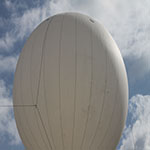Euroacademia Conferences
 Europe Inside-Out: Europe and Europeanness Exposed to Plural Observers (9th Edition) April 24 - 25, 2020
Europe Inside-Out: Europe and Europeanness Exposed to Plural Observers (9th Edition) April 24 - 25, 2020 Identities and Identifications: Politicized Uses of Collective Identities (9th Edition) June 12 - 13, 2020
Identities and Identifications: Politicized Uses of Collective Identities (9th Edition) June 12 - 13, 2020 8th Forum of Critical Studies: Asking Big Questions Again January 24 - 25, 2020
8th Forum of Critical Studies: Asking Big Questions Again January 24 - 25, 2020 Re-Inventing Eastern Europe (7th Edition) December 13 - 14, 2019
Re-Inventing Eastern Europe (7th Edition) December 13 - 14, 2019 The European Union and the Politicization of Europe (8th Edition) October 25 - 26, 2019
The European Union and the Politicization of Europe (8th Edition) October 25 - 26, 2019 Identities and Identifications: Politicized Uses of Collective Identities (8th Edition) June 28 - 29, 2019
Identities and Identifications: Politicized Uses of Collective Identities (8th Edition) June 28 - 29, 2019 The European Union and the Politicization of Europe (7th Edition) January 25 - 26, 2019
The European Union and the Politicization of Europe (7th Edition) January 25 - 26, 2019 7th Forum of Critical Studies: Asking Big Questions Again November 23 - 24, 2018
7th Forum of Critical Studies: Asking Big Questions Again November 23 - 24, 2018 Europe Inside-Out: Europe and Europeanness Exposed to Plural Observers (8th Edition) September 28 - 30, 2018
Europe Inside-Out: Europe and Europeanness Exposed to Plural Observers (8th Edition) September 28 - 30, 2018 Identities and Identifications: Politicized Uses of Collective Identities (7th Edition) June 14 - 15, 2018
Identities and Identifications: Politicized Uses of Collective Identities (7th Edition) June 14 - 15, 2018
The Venice Biennale as a System of (Inter)National (Re)Presentation: The Polish Pavilion
-
-

-
Presentation speakers
- Margareta Scherf, Braunschweig Universtity of Arts, Germany
- Download presentation
Abstract:
The Venice Biennale was born in the nineteenth century as a reflection of a new European national order: nations were asked to show their own art. National pavilions were gradually arising and took over indirectly the function of embassies. The art presented there, became representative for a nation. Also the polish nation, at this time stateless, got a chance to present its art there. With the possession of the Polish Pavilion (inaugurated in 1930), certain procedures of organization and control of exhibiting art were developed. On the one hand became this exhibition a national tradition in Poland, on the other a tool of propaganda, in the positive and negative sense. What is internationally presented as Polish in the Polish Pavilion, what represents the Polish nation there, depends on the politics of the Polish state. Three political contexts, the nationalist period, the communist period and the time after 1989, make a framework to analyze this topic. The national exhibition structure of the Venice Biennale was and is still criticized as obsolete and the “death” of Biennale was often predicted. However, this over a hundred years old exhibition seems not to pass. The supranational organization of the European Union gives an opportunity for culture exchange. Furthermore the new European identity theoretical is probable. On the second hand the fear of losing the national identity makes conservative movements active. Which positions take artists and how reacts the public opinion to their art? Which values the Polish state is supporting today by the culture politic? For the 54th Biennale, the polish state organizers chose as their “national” representation an Israeli artist, Yael Bartana. Her work, a video trilogy, examines the separation we-they, native-stranger: three million Jews should come back home, to Poland… -
Related Presentations

The European Economic Crisis: Revitalizing National Identity Through Political Cartoons and Images
- Georgios Tsarsitalidis

Narrating the Colony: The Imaginary of the Colony as Seen in Corto Maltese
- Raimundo Clemente Lima Neto















